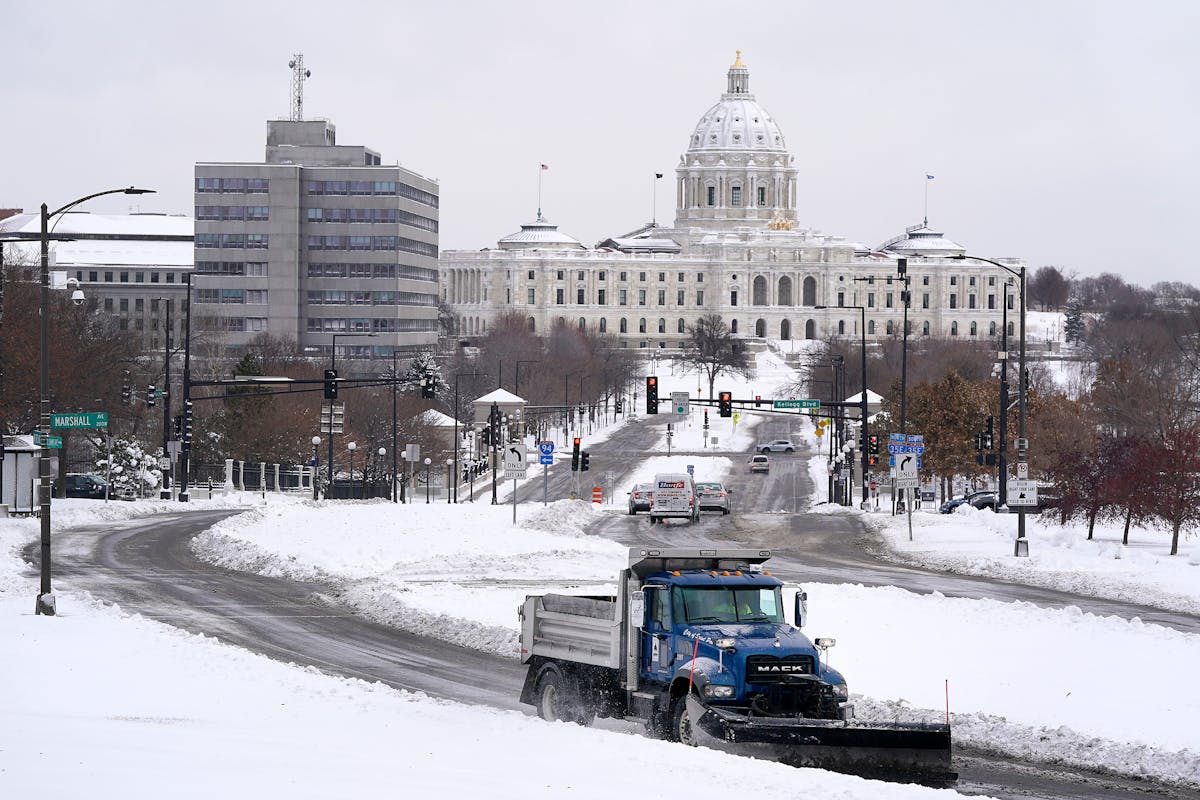Indicators of COVID-19 severity have increased after declining over Thanksgiving in Minnesota, which on Tuesday reported 45 more COVID-19 deaths, including a Hennepin County teenager.
The COVID-19 death is the seventh since the start of the pandemic to involve someone 19 or younger in Minnesota and the fourth to involve a teenager in the latest pandemic wave this fall. While 86% of Minnesota's 9,699 COVID-19 deaths involved seniors, only 73% of the deaths since July 1 have been among people 65 and older.
Gov. Tim Walz on Tuesday urged more COVID-19 vaccinations while celebrating the fact that 25% of children 5 to 11 have received at least first doses since they became eligible one month ago. Minnesota ranks sixth among states in vaccination progress with this age group and 22nd overall with a first-dose rate of 74.3% among people 5 and older.
"The single most important thing you can do to protect your family from this virus this holiday season is get your family vaccinated," Walz said.
Health officials globally are watching the emergence of a fast-spreading omicron variant of the coronavirus, but for now the dominant delta variant continues to infect more Minnesotans. The seven-day rolling average of new infections in Minnesota dropped briefly to 3,423 per day on Thanksgiving, but rose back to 4,529 in the week ending Dec. 3.
The state's reported positivity rate of COVID-19 diagnostic testing declined to 10.1% in the week before the holiday because of increased testing of healthy individuals before family gatherings. The rate then increased to 11.5% for the seven days ending Nov. 29, indicating a substantial level of viral spread in Minnesota. The rate hadn't been above 11% since last December.
The state on Tuesday reported 12,445 more coronavirus infections, reflecting viral activity that was detected over the weekend. Total coronavirus infections in Minnesota increased to 945,445, and included 11,022 reinfections of people diagnosed with COVID-19 more than once.
COVID-19 hospitalizations in Minnesota increased on Monday to 1,621, a 2021 record that included 335 people receiving intensive care because of breathing problems or complications from their infections.
The majority of COVID-19 hospitalizations continue to be in unvaccinated Minnesotans, even though they make up less than one-third of the state's population. Allina Health reported that 323 of the 440 COVID-19 patients in its hospitals on Monday were unvaccinated, along with 49 of the 54 patients on ventilators.
Minnesota has had the nation's highest rate of new infections, off and on, for much of the past month — a vexing reality for a state with an above average COVID-19 vaccination rate.
The state's long wave defied pandemic models that predicted declines in infections by mid-November. Florida experienced higher infection and death rates during its delta wave this summer, but it rose and fell in five months. Montana similarly experienced more severe numbers this fall that have since declined while Minnesota's infection rate has gradually risen.
Health officials suspect Minnesota is suffering from unfortunate timing, because a COVID-19 wave that was most severe in the South this summer made its way north just as immunity was beginning to wane among the earlier vaccine recipients.
"We have had a longer time for waning immunity to run its course and now more indoor contact and exposure," said Curtis Storlie, a co-creator of the Mayo Clinic COVID-19 model that has been heavily used by Walz and state health officials. "Both of these create more opportunity for the virus to continue, all while cases are still elevated as well. [Florida] and other states had their cases recede before they had as much chance for waning immunity to occur."
Booster doses are recommended for all adults because immunity — at least from the delta variant — appears to wane six months after initial COVID-19 vaccination. Minnesota ranks second among states with more than 38% of its fully vaccinated adults receiving boosters, according to the Centers for Disease Control and Prevention.
Mayo's model predicts continued COVID-19 growth in Minnesota but a decline later in December when more people will be considered protected by booster doses or temporary immunity following infections.
Minnesota is one of more than 15 states to have identified an infection involving the omicron variant, which could alter pandemic trends as well. It was labeled a variant of concern after it was discovered in South Africa because of its rapid spread and potential to evade immunity from vaccination or previous infection.
The state's first case was reported Thursday out of eight suspicious samples that were submitted for genomic sequencing. Four others did not have the omicron variant while results from three other samples are pending.

A tale of 124 hoarded Minnesota cats has at least a hundred happy endings

Walz, St. Paul leaders urge support for copper wire theft bill: 'We've got to get in front of it'
Body of missing canoeist, 15, recovered from southwest Minnesota lake

High winds flipped a FedEx truck traveling on Bong Bridge in Duluth

